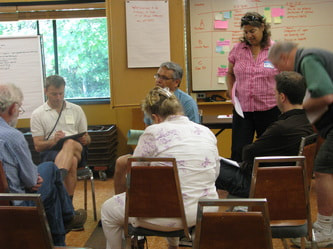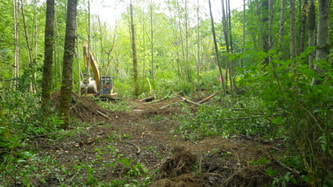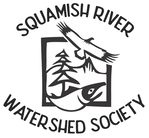The Squamish Salmon Recovery Plan:
Coordinating Action, Restoring Habitat, & Monitoring Salmon Returns
Declining Fish Stock in the Squamish River Watershed
The Squamish River Watershed was selected as one of six watersheds in British Columbia to focus Pacific salmon recovery efforts on in 2002. It is the largest watershed in the Strait of Georgia, and is comprised of many tributaries (Cheakamus, Mamquam, Elaho, Stawamus Rivers and Ashlu Creek) and channels that drain directly into the Howe Sound.
The watershed is home to all types of Pacific Salmon, as well steelhead and cutthroat trout, and Dolly Varden, and Sturgeon fish. The Squamish River Estuary is home to a recovering herring stock, and various types of waterfowl and marine mammals. While the watershed is rich in species diversity, the watershed also faces pressure from urban, recreational, and industrial development. Development pressure in the watershed over the years has resulted in a loss of salmon habitat and a decline the number of salmon in the Squamish river and it’s tributaries
The watershed is home to all types of Pacific Salmon, as well steelhead and cutthroat trout, and Dolly Varden, and Sturgeon fish. The Squamish River Estuary is home to a recovering herring stock, and various types of waterfowl and marine mammals. While the watershed is rich in species diversity, the watershed also faces pressure from urban, recreational, and industrial development. Development pressure in the watershed over the years has resulted in a loss of salmon habitat and a decline the number of salmon in the Squamish river and it’s tributaries
Working Together to Restore Pacific Wild Salmon
|
The Pacific Salmon Foundation (PSF), through their federal government endowment fund are working to develop collaborative governance of natural resources that achieve healthy, sustainable and naturally diverse population of wild Pacific salmon for generations to come (PSF, 2011).
The SRWS shares the Pacific Salmon Foundation's vision for collaborative governance of natural resources and became a member of the Salmon Recovery Plan Advisory Committee, and has been coordinating projects to implement the recovery plan since 2006. Representatives from Squamish Nation, the Department of Fisheries and Oceans, the Cheakamus Centre’s Hatchery Program, the Ministry of Forests, Lands, and Natural Resource Operations along with the Pacific Salmon Foundation sit on the recovery plan advisory committee, and the committee meets annually to update and prioritize the plans area of focus. |
The Plan: A Living Document to Guide Salmon Stock Recovery
The SRWS has been working with various stakeholders to implement the Squamish Salmon Recovery Plan since 2005. The Squamish River Watershed Salmon Recovery Plan is a compilation of existing information on salmon and steelhead stocks in the Squamish river watershed as of 2005. The plan outlines a list of projects to enhance salmon and steelhead stocks through habitat restoration, stock assessment, hatchery enhancements, stock monitoring, and education. The assessment framework was developed in 2006 to measure how ongoing projects contribute to meeting the goals and objectives identified in the Squamish Salmon Recovery Plan.
Each year the SRWS hosts a Squamish Salmon Recovery Plan meeting where First Nations, Government, Industry, and Community representatives decide on priority projects for the coming year.
For more information on projects that have been implemented under the Squamish Salmon Recovery Plan please contact us.
Each year the SRWS hosts a Squamish Salmon Recovery Plan meeting where First Nations, Government, Industry, and Community representatives decide on priority projects for the coming year.
For more information on projects that have been implemented under the Squamish Salmon Recovery Plan please contact us.





